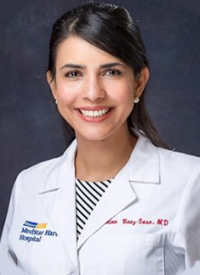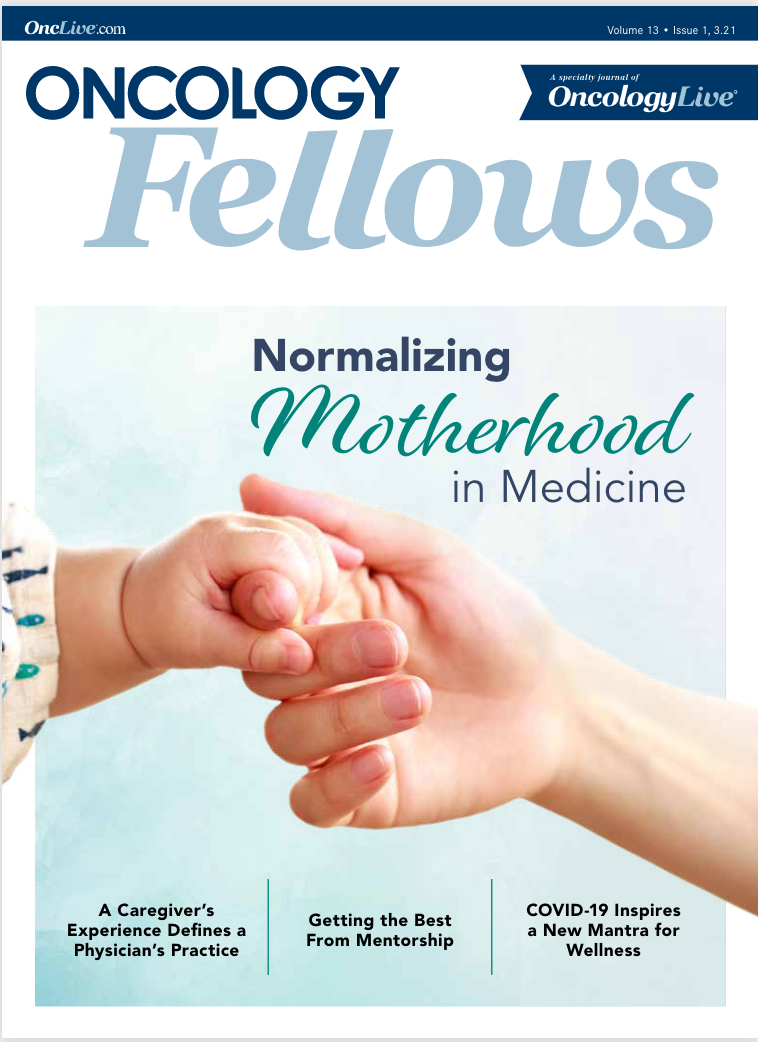COVID-19 Inspires a New Mantra for Wellness
The COVID-19 pandemic has inspired a new mantra for wellness in the oncology community and beyond.
Valentina Baez Sosa, MD

The number of patients with coronavirus disease 2019 (COVID-19) continues to rise, with more than 117 million confirmed cases and 2.6 million deaths worldwide as of March 9, 2021.1 I never thought I would be included in that statistic; despite my abundance of caution, I was infected with COVID-19. Although most patients present with mild symptoms and convalesce at home, a minority of patients, often with significant comorbidities, will be hospitalized and have a higher incidence of critical or fatal disease.2-6 Unfortunately, my case was not mild.
On a Sunday afternoon, I was running my usual 5K to prepare my mind and spirit for the challenges of the week ahead. I noticed I was more tired than usual. Three days later, I was exhausted walking up the stairs. Later that night, I experienced coughing, muscle pain, and extreme fatigue. Suspecting I might have contracted COVID-19, I called my chief fellow, program director, and occupational health to get tested. When the results came back, my greatest fear became real. I had the virus. My main concern was not only my well-being but the safety of my patients and colleagues.
After missing several weeks of work, I was dealing with a mix of guilt, fear, and uncertainty. I realized that if I did not do something proactive to work on my overall health, my anxiety would grow and affect my patient care and my life. I want to share 4 strategies that helped me cope and improve my well-being during that difficult time.
Mindful Breathing
In his book Think Like a Monk, Jay Shetty recounted how, on his first day of instruction, he noticed a 10-year-old monk teaching a group of younger children how to breathe. Instead of numbers or the alphabet, he said that “breathing is the only one constant through your life. Your friends, family, the country you live in, your health—all that can change. But breathing is always with you. When you are stressed, angry, or anxious, your breathing can change. If you learn to navigate and manage your breathing, you can navigate any situation in life.”7
Meditation has been an invaluable tool to achieve mindful breathing for me. But it takes practice. With a fellow’s busy schedule, sitting in silence for 30 minutes or even 5 is difficult if not impossible.
However, after learning all the benefits of meditation, I had to carve out time in my day. How much time could I devote?
Three minutes. Every morning, I park my car outside the hospital and use a meditation app. I close my eyes and focus on my breathing for 3 minutes. It is not much, but the practice has changed my days completely.
Express Your Feelings
I learned from Marc Brackett, PhD, director of the Yale Center for Emotional Intelligence, that emotional literacy can affect overall wellness, with a particularly strong effect on new learning, relationships, decision-making, physical health, and performance. Feelings are meant to be felt. By using his evidence-based RULER skills, you can8:
- Recognize emotions in yourself and others.
- Understand the causes and consequences.
- Label emotions accurately.
- Express emotions appropriately.
- Regulate emotions effectively.
The most important question that we often fail to take seriously is, “How are you feeling?” You must be willing to ask yourself that question and listen to the honest answer to achieve emotional intelligence.
The Power of Connection
Even when we are surrounded by people, we can feel lonely. Different from the isolation that is based on the number of people around you, loneliness is defined as a discrepancy or a gap between the connection you need and the social connection you have.9 There is no doubt that the pandemic has enhanced social isolation and loneliness worldwide.10
Nowadays, it is widely understood that one of the most critical factors in preventing and addressing toxic stress is healthy social connection.11,12 While a traumatic past may increase our fear of bad things happening, we are not defined by our history. It is in our relationships with one another that we can find healing and a better path forward.13 Therefore, an antidote to loneliness is seeing the power of connection and creating a network or a community of people who share your sense of purpose and interests.13
A meaningful shared experience like joining online cooking classes, painting, yoga classes, or simply showing up with kindness, gratitude, and compassion for yourself and others can make a huge difference in creating meaningful connections. Sharing my experience might resonate with you, and then we are not lonely anymore. By sharing the same path, we can rescue one another.13
Break the Stress Cycle
Emotional exhaustion, depersonalization, and decreased sense of accomplishment are the 3 components of burnout.14,15 Exacerbated by COVID-19, the incidence of burnout is as high as 44% among 4424 physicians in a cross-sectional study.16 Higher levels of stress require more effective ways of managing that stress.
Understanding the distinction between the stressors that we cannot control (external) and the stress that we feel in our bodies (internal) was crucial for me to avoid burnout. I learned that emotions are like a tunnel with a beginning, a middle, and an end. We experience burnout and emotional exhaustion when we get stuck in that tunnel.17
How do we close the stress cycle? Emily Nagoski, PhD, and Amelia Nagoski, DMA, have written extensively on managing stress and burnout. They have found that physical activity is probably the most efficient way to deal with stress.17 Any activity counts: running, dancing, biking, swimming, stretching, yoga. There is increasing evidence highlighting the positive effects of exercise on mental health through different physiological and biochemical mechanisms that we all know.18
If you do not believe me, try at least 15 minutes early in the morning of any aerobic or nonaerobic activity you like and see how your day goes. After a difficult day, try running for 30 minutes outside, and your body will let you know that you have completed the stress cycle. Breathe, feel, share, and run is my new mantra.
References
- Dong E, Du H, Gardner L. An interactive web-based dashboard to track COVID-19 in real time. Lancet Infect Dis. 2020;20(5):533-534. doi:10.1016/S1473-3099(20)30120-1
- Richardson S, Hirsch JS, Narasimhan M, et al. Presenting characteristics, comorbidities, and outcomes among 5700 patients hospitalized with COVID-19 in the New York City area. JAMA. 2020;323(20):2052-2059. doi:10.1001/jama.2020.6775
- Myers LC, Parodi SM, Escobar GJ, Liu VX. Characteristics of hospitalized adults with COVID-19 in an integrated health care system in California. JAMA. 2020;323(21):2195-2198. doi:10.1001/jama.2020.7202
- Cummings MJ, Baldwin MR, Abrams D, et al. Epidemiology, clinical course, and outcomes of critically ill adults with COVID-19 in New York City: a prospective cohort study. Lancet. 2020;395(10239):1763-1770. doi:10.1016/S0140-6736(20)31189-2
- Petrilli CM, Jones SA, Yang J, et al. Factors associated with hospital admission and critical illness among 5279 people with coronavirus disease 2019 in New York City: prospective cohort study. BMJ. 2020;369:m1966. doi:10.1136/bmj.m1966
- Brouwer PJM, Caniels TG, van der Straten K, et al. Potent neutralizing antibodies from COVID-19 patients define multiple targets of vulnerability. Science. 2020;369(6504):643-650. doi:10.1126/science.abc5902
- Shetty J. Think Like a Monk: Train Your Mind for Peace and Purpose Every Day. Simon & Schuster; 2020.
- Brackett M. Permission to Feel: Unlocking the Power of Emotions to Help Our Kids, Ourselves, and Our Society Thrive. Celadon Books; 2019.
- Loades ME, Chatburn E, Higson-Sweeney N, et al. Rapid systematic review: the impact of social isolation and loneliness on the mental health of children and adolescents in the context of COVID-19. J Am Acad Child Adolesc Psychiatry. 2020;59(11):1218-1239.e3. doi:10.1016/j.jaac.2020.05.009
- Banerjee D, Rai M. Social isolation in Covid-19: the impact of loneliness. Int J Soc Psychiatry. 2020;66(6):525-527. doi:10.1177/0020764020922269
- 11.Werner EE. Children and war: risk, resilience, and recovery. Dev Psychopathol. 2012;24(2):553-558. doi:10.1017/S0954579412000156
- Werner EE. Journeys from childhood to midlife: risk, resilience, and recovery. Pediatrics. 2004;114(2):492. doi:10.1542/peds.114.2.492
- Murthy, VH. Together: The Healing Power of Human Connection in a Sometimes Lonely World. HarperCollins; 2020.
- Maslach C, Jackson SE. The measurement of experienced burnout. J. Organ Behav. 1981;2(2):99-113. doi:10.1002/job.4030020205
- Freudenberger HJ. Staff Burn-Out. J Soc Issues. 1974;30(1):159-165. doi:10.1111/j.1540-4560.1974.tb00706.x
- Garcia LC, Shanafelt TD, West CP, et al. Burnout, depression, career satisfaction, and work-life integration by physician race/ethnicity. JAMA Netw Open. 2020;3(8):e2012762. doi:10.1001/jamanetworkopen.2020.12762
- Nagoski E, Nagoski A. Burnout: The Secret to Unlocking the Stress Cycle. Ballantine Books; 2019.
- Mikkelsen K, Stojanovska L, Polenakovic M, Bosevski M, Apostolopoulos V. Exercise and mental health. Maturitas. 2017;106:48-56. doi:10.1016/j.maturitas.2017.09.003




